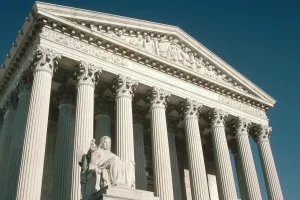The Supreme Court’s Conservative Majority and Executive Power
The Supreme Court’s conservative majority has demonstrated a consistent pattern of receptiveness toward the current administration’s assertions of executive authority. Through multiple high-profile cases, these justices have often deferred to presidential powers, showing willingness to accept broad interpretations of what the executive branch can do without congressional approval or judicial intervention. This trend represents a significant development in the constitutional balance of powers, as the Court appears increasingly inclined to grant the administration substantial leeway in areas ranging from immigration enforcement to regulatory authority and national security matters.
This judicial posture hasn’t emerged in isolation but reflects a complex interplay of legal philosophy, political alignment, and institutional dynamics. The conservative justices, many appointed by presidents who championed expansive executive power, have generally embraced legal theories that provide greater constitutional latitude to presidential action. Their opinions frequently emphasize the president’s unique role as the sole elected representative of the entire nation and the need for decisive action unencumbered by excessive checks from other branches. Critics argue this approach risks undermining the Founders’ vision of separated powers, while supporters contend it simply recognizes the practical realities of modern governance in a complex global environment.
The pattern becomes particularly evident when examining specific cases where the administration has claimed special authority. In cases involving border security measures, environmental regulations, and responses to public health emergencies, the Court’s conservative majority has often accepted arguments that the president possesses inherent or statutorily delegated powers that warrant judicial deference. This stands in notable contrast to the Court’s approach during previous administrations, where similar claims of executive authority sometimes faced more rigorous scrutiny. The conservative justices typically justify this approach through textualist and originalist interpretations of constitutional provisions regarding executive power, though their applications of these methodologies have sparked intense academic and political debate.
The implications of this judicial trend extend far beyond abstract constitutional theory, affecting millions of lives through policy implementation. When the Court allows broad executive actions to proceed, it enables the administration to rapidly implement significant changes across diverse areas of American life without navigating the increasingly gridlocked legislative process. This judicial approach has practical consequences for regulatory policies, immigration enforcement priorities, and administrative agency operations throughout the federal government. For supporters of strong presidential authority, this represents needed efficiency in governance; for critics, it signals dangerous consolidation of power in a single branch that the Constitution’s framers specifically sought to prevent through institutional checks and balances.
Interestingly, this pattern of deference to executive power claims appears somewhat selective rather than universal. The same conservative justices who readily accept broad presidential authority in some domains have shown greater skepticism toward executive power when examining certain regulatory initiatives or administrative agency interpretations. This apparent inconsistency has led some legal observers to suggest that ideological alignment with the administration’s policy goals, rather than pure constitutional principles about executive power, might sometimes influence the Court’s receptiveness to presidential authority claims. This observation complicates simplistic narratives about the Court’s jurisprudence while raising important questions about the role of judicial review in an increasingly polarized political landscape.
Looking ahead, the Court’s current approach to executive power claims will likely have lasting consequences for American governance regardless of which party controls the White House. By establishing precedents that expand presidential authority across multiple domains, the conservative majority may be reshaping constitutional boundaries in ways that future administrations of any political alignment could exploit. This raises fundamental questions about democratic accountability, separation of powers, and the proper role of courts in constraining executive action. As the administration continues asserting broad powers and the Court remains receptive to such claims, Americans across the political spectrum must grapple with what these developments mean for the constitutional system designed to distribute power and prevent its concentration in any single branch of government.








